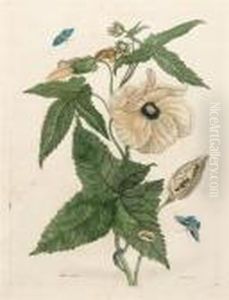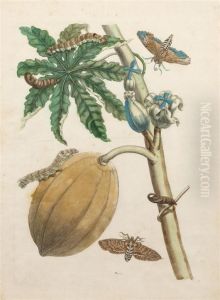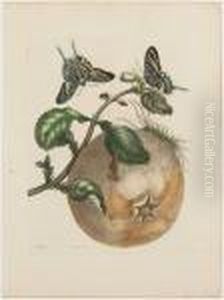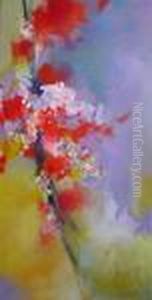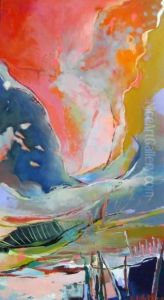Sybille Merian Paintings
Maria Sibylla Merian was an influential German naturalist and scientific illustrator, born on April 2, 1647, in Frankfurt am Main, Holy Roman Empire (now Germany). She was one of the first naturalists to observe insects directly. Merian documented the life cycles of 186 insect species, making significant contributions to entomology, particularly in the understanding of metamorphosis.
Merian's interest in entomology began early in her life, partly due to the influence of her stepfather, the still-life painter Jacob Marrel, who encouraged her artistic talents. At the age of thirteen, she began studying and sketching insects, observing their metamorphosis, and documenting the relationship between caterpillars and their host plants.
In 1665, she married Johann Andreas Graff, and while living in Nuremberg, Merian continued her work in entomology and botanical illustration. In 1670, after the birth of her second daughter, the family moved to Frankfurt. It was there that Merian published her first book of natural illustrations, 'Neues Blumenbuch', in three volumes between 1675 and 1680. Her work was groundbreaking because it deviated from the decorative illustrations of the time and instead focused on scientific observation.
Merian's marriage ended in 1685, and she moved with her mother and daughters to a religious community in the Netherlands. There, she continued her work and later published 'Der Raupen wunderbare Verwandelung und sonderbare Blumennahrung' ('The Caterpillars' Marvelous Transformation and Strange Floral Food') in 1679, which was notable for its scientific accuracy and detailed descriptions.
In 1699, she undertook a risky expedition to the Dutch colony of Surinam in South America to study and record the tropical insects. In 1705, she published her major work, 'Metamorphosis Insectorum Surinamensium', detailing the life cycles of Surinam's insects. This work earned her international acclaim and was groundbreaking in both art and science.
Maria Sibylla Merian passed away in Amsterdam on January 13, 1717. Her work has continued to be respected both for its artistic value and scientific import. Merian is considered one of the most significant contributors to the field of entomology, thanks to her detailed observations and descriptions of the life cycles of insects, which challenged many of the misconceptions of her time.
